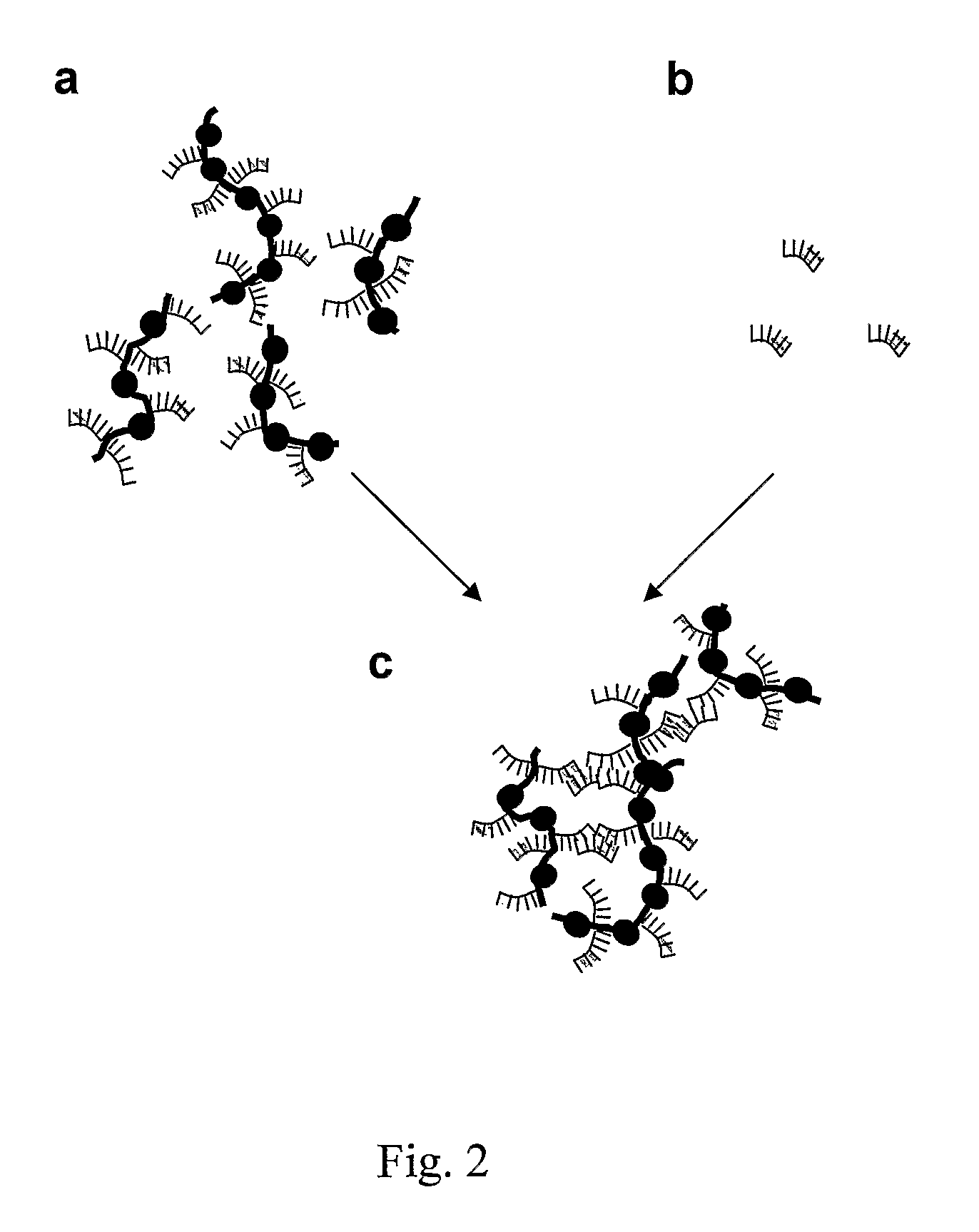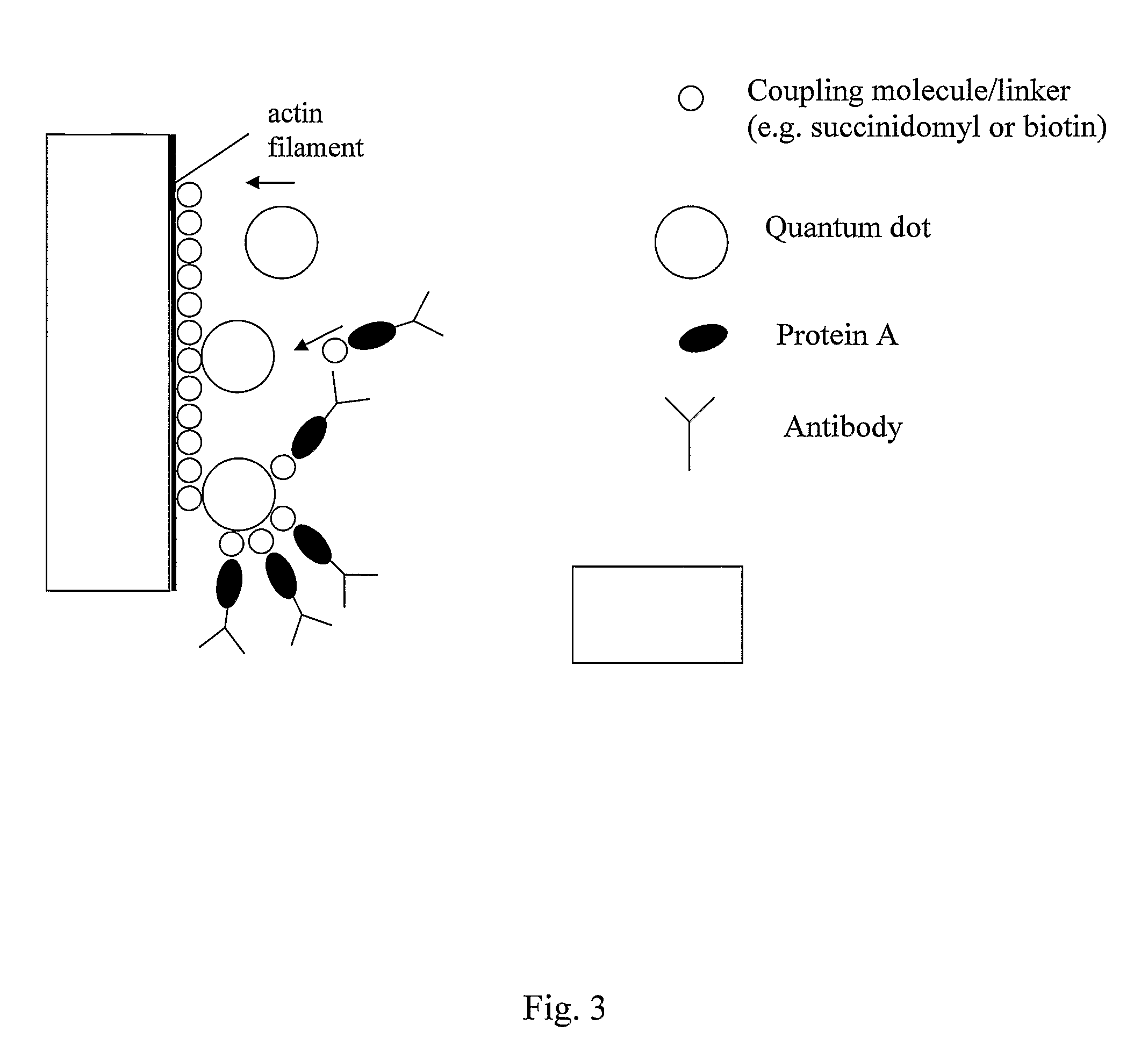Detection conjugate
a conjugate and detection technology, applied in the field of detection conjugates, can solve the problems reducing the detection speed, and developing extremely complex techniques, and achieves the effect of increasing the sensitivity of compound/analyte detection and low cos
- Summary
- Abstract
- Description
- Claims
- Application Information
AI Technical Summary
Benefits of technology
Problems solved by technology
Method used
Image
Examples
example 1
Purification of Actin Filaments
[0040]Actin filaments are obtained from G-actin monomers purified from skeletal or heart muscle (e.g. Bovine heart obtained as a by-product in the meat industry). The purification of actin and the formation of filamentous form of the protein are performed according to standard procedures (e.g.13, 15).
example 2
Storage of Actin Filaments
[0041]Following the isolation of actin filaments as described above these may be stored at −80° C. for several years without loss of function13.
example 3
Stabilization of Actin Filaments by Chemical Modification
[0042]The actin filaments can be stabilized by mixing with an equimolar (on monomer basis) concentration of phalloidin as described previously16.
PUM
| Property | Measurement | Unit |
|---|---|---|
| length | aaaaa | aaaaa |
| size | aaaaa | aaaaa |
| length | aaaaa | aaaaa |
Abstract
Description
Claims
Application Information
 Login to View More
Login to View More - R&D
- Intellectual Property
- Life Sciences
- Materials
- Tech Scout
- Unparalleled Data Quality
- Higher Quality Content
- 60% Fewer Hallucinations
Browse by: Latest US Patents, China's latest patents, Technical Efficacy Thesaurus, Application Domain, Technology Topic, Popular Technical Reports.
© 2025 PatSnap. All rights reserved.Legal|Privacy policy|Modern Slavery Act Transparency Statement|Sitemap|About US| Contact US: help@patsnap.com



